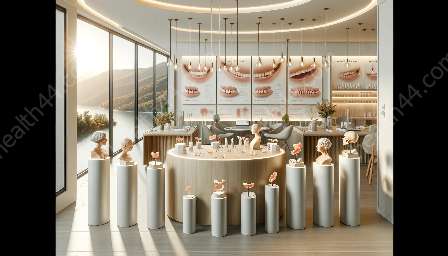Partial dentures are an essential dental appliance for patients who are missing some of their natural teeth. They come in two main types: temporary and permanent partial dentures. Each type has its own unique features, advantages, and drawbacks. In this article, we will explore the differences between temporary and permanent partial dentures to help you understand which option may be best for your needs.
Temporary Partial Dentures
Temporary partial dentures, also known as immediate dentures, are designed to be used while the patient's mouth is still healing from tooth extractions or other dental procedures. They are typically made from acrylic or other materials that can be easily adjusted to accommodate any changes in the shape of the gums and jawbone as the healing process progresses.
One of the primary advantages of temporary partial dentures is that they can be delivered to the patient quickly. This means that the patient doesn't have to wait for a prolonged period without teeth while their permanent partial dentures are being manufactured. Temporary partial dentures also serve a crucial function in maintaining the aesthetics and function of the patient's smile during the healing process.
However, temporary partial dentures are not intended for long-term use. They are considered a temporary solution, and as a result, they may not be as durable or comfortable as permanent partial dentures. Patients should expect to have adjustments made to their temporary partial dentures as their mouth heals and changes shape. Despite their temporary nature, these dentures play a critical role in the overall oral health and well-being of the patient during the transition to permanent dentures.
Permanent Partial Dentures
Permanent partial dentures, as the name suggests, are designed to be a long-term solution for patients who are missing some of their natural teeth. These dentures are custom-made to fit the unique contours of the patient's mouth and are often made using a combination of metal and acrylic materials to provide strength and durability.
Unlike temporary partial dentures, permanent partial dentures are built to last and can withstand the wear and tear of everyday use. They are specifically crafted to blend in seamlessly with the patient's natural teeth, providing a comfortable and aesthetically pleasing solution for replacing missing teeth. Additionally, permanent partial dentures can help prevent the remaining natural teeth from shifting out of alignment, which can occur when there are gaps in the dental arch.
While permanent partial dentures offer many advantages, they require a longer fabrication time compared to temporary dentures. The process of creating permanent partial dentures involves several stages, including impressions, bite registration, and customizations to ensure a precise fit. However, the wait for permanent partial dentures is often worth it, as they offer superior comfort, stability, and longevity.
Comparison of Materials
Temporary partial dentures are typically made from acrylic or resin materials that are easily adjustable, making them suitable for immediate use during the healing process. On the other hand, permanent partial dentures often incorporate metal frameworks, such as cobalt-chromium or titanium, combined with acrylic or porcelain teeth. The use of metal components in permanent partial dentures provides added strength and stability, making them a more robust long-term solution.
Pros and Cons
Temporary Partial Dentures:
- Pros:
- Quick delivery
- Aesthetically pleasing during the healing process
- Cons:
- Temporary nature requires adjustments
- Not as durable as permanent dentures
- Permanent Partial Dentures:
- Pros:
- Custom-made for long-term use
- Durable and stable
- Prevent natural teeth from shifting
- Cons:
- Longer fabrication time
- Higher initial cost
Conclusion
Choosing between temporary and permanent partial dentures depends on factors such as the patient's healing timeline, budget, and long-term oral health goals. While temporary partial dentures offer immediate benefits, they require ongoing adjustments and are not designed for extended use. In contrast, permanent partial dentures provide a durable, long-term solution that can enhance both the function and aesthetics of a patient's smile.
Ultimately, working closely with a qualified dental professional is essential for determining the most suitable option based on the individual patient's needs and circumstances.


